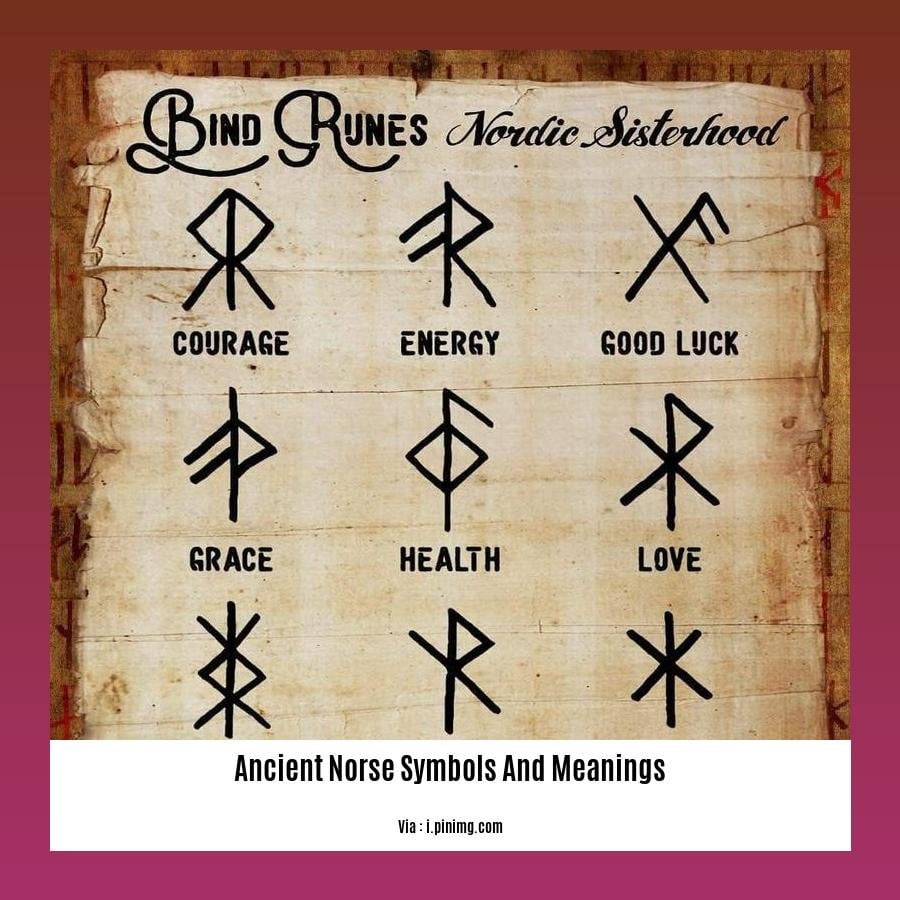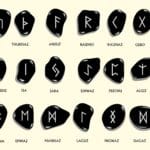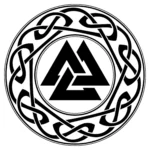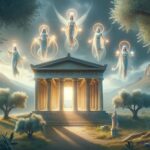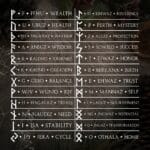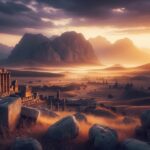In this fascinating article, [Exploring the old Norse Symbols and Meanings: A Journey Through History and Mythology] travel into the mesmerizing realm of old Norse symbols and meanings. As we decode the mysterious symbols and untangle the complex fabric of Norse mythology, beliefs, and culture, From the complex carvings on rune stones to the gripping stories of gods and goddesses, this page is a veritable gold mine of information for everyone trying to grasp the depths of Norse history and mythology.
Key Takeaways:
- Norse symbols hold deep significance in Norse mythology and culture, representing various aspects of their beliefs and worldview.
- The Valknut symbolizes the death and rebirth of warriors in Valhalla, where fallen warriors reside after death.
- Yggdrasil represents the world tree that connects the nine realms of Norse cosmology, symbolizing interconnectedness and the vastness of the universe.
- Aegishjalmur represents protection and power, often used as a talisman or amulet for warriors or travelers.
- Vegvisir symbolizes guidance and direction, often used to navigate through challenging journeys or transitions.
- The Triple Horn of Odin represents Odin’s wisdom and relentless quest for knowledge.
- Mjölnir represents Thor’s hammer, symbolizing strength, protection, and the power of thunder and lightning.
- Swastika represents good luck, prosperity, and the cycles of life and death.
- Svefnthorn symbolizes sleep, dreams, and the gateway to the realm of dreams.
- Gungnir represents Odin’s spear, symbolizing authority, leadership, and the power to shape destiny.
- Huginn and Muninn represent Odin’s ravens, Huginn and Muninn, who bring him news and knowledge from the world, embodying thought, memory, and the pursuit of wisdom.
Ancient Norse Symbols and Meanings
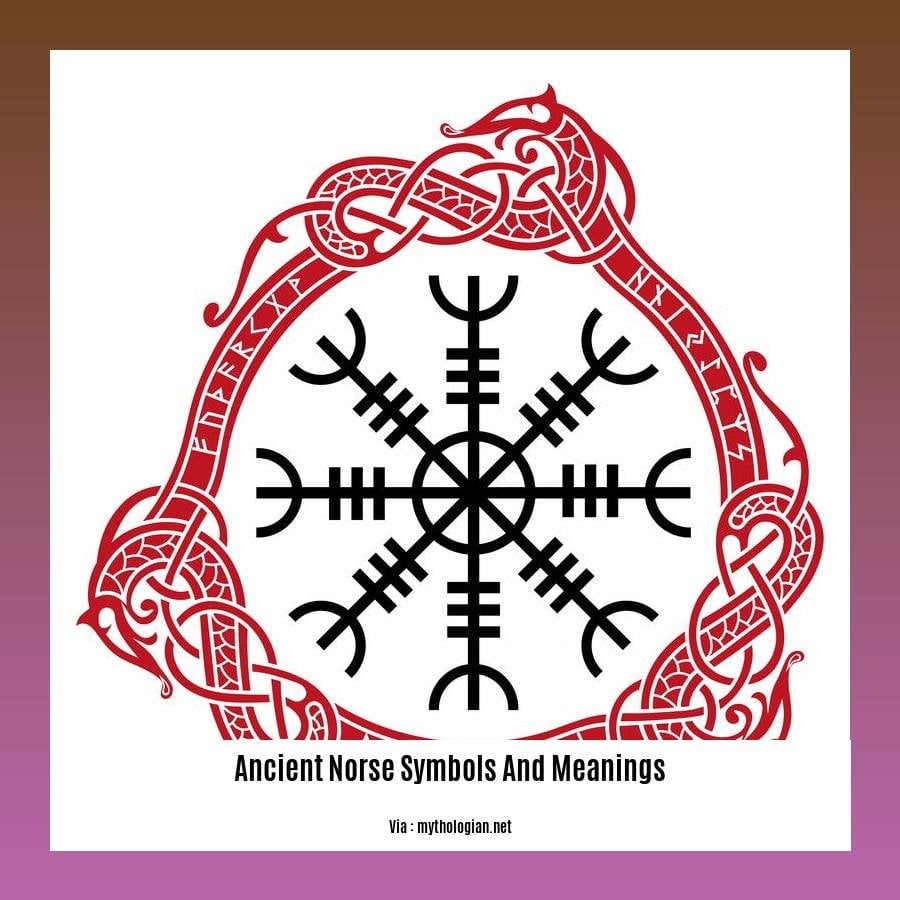
In terms of old Norse mythology and culture, symbols were very important in forming their worldview, customs, and beliefs. The mysterious symbols of the Norse people chronicle gods, heroes, and the complex links among the nine worlds. As we untangle the great meanings buried behind these old Norse symbols, set off a trip throughout history and mythology.
The Valknut: A Life, Death, and Rebirth Symbol
Comprising three overlapping triangles, the Valknut is among the most recognizable Norse emblem with great meaning. Usually connected with Odin, the deity of wisdom and combat, it is thought to symbolize the cycle of life, death, and rebirth. With the central triangle denoting death, the top triangle denoting life, and the bottom triangle denoting rebirth, the three triangles together indicate the connectivity of these stages.
Yggdrasil: World Tree Linking the Nine Realms
Norse mythology revolves mostly on the magnificent Yggdrasil, a giant tree linking the nine worlds of Norse cosmology. Its roots reach into the underworld, its trunk stands securely in Midgard (the realm of people), and its branches stretch into Asgard (the realm of the gods), therefore linking all worlds and acting as a symbol of the interconnection of the universe. The presence of Yggdrasil reminds us of the delicate equilibrium between the worlds, in which acts in one sphere affect events in another.
Aegishjalmur: Awe and Protection’s Helm
Bearing eight trights emanating from a central circle, the Aegishjalmur is a sign of strength and protection. With its moniker, “Helm of Awe,” which implies “power to instill fear and awe in enemies,” Wearing it as a talisman or amulet, warriors and travellers believed it would shield them from evil and provide them bravery in battle or on dangerous roads.
Vegvisir: A Manual for Traveling Difficult Routes
Representing a compass with eight arms, the Vegvisir provided a navigational guide for both spiritual and physical paths. Translating as “signpost,” it was thought to lead visitors over alien territory, dangerous waters, and life’s symbolic crossroads. Taking the Vegvisir was supposed to guarantee protection against becoming lost or diverted and safe passage.
Thor’s Hammer, Mjölnir: the Might of Thunder
Thor’s fabled hammer, the great Mjölnir, is a metaphor of great power, thunder, and lightning. Its power was thought to be able to consecrate, heal, and resurrect in addition to physical force. The Mjölnir stood in for Thor’s almighty power as guardian of Asgard and Midgard.
The Swastika: A Luck and Prosperity Symbol
In Norse society, the four-arm swastika—which consists of bent ends—has a multifarious connotations. It stood for luck, wealth, and the seasons of life and death. But its use now calls for care and knowledge of its historical and cultural background since some ideas have appropriated it.
Finally, the complex tapestry of Norse mythology, culture, and ideas embodied by the ancient Norse symbols. They are portals into the universe of gods, heroes, and the complex interactions among the nine worlds. These icons still enthrall and motivate us since they remind us of the ongoing power of narrative and the need of symbols in forming our perspective of the environment.
Wondering about the intricacies of ancient people and cultures? Learn more about the job specialization throughout the age in ancient Mesopotamia. Discover the various ancient names for soap and their significance in hygiene and cleanliness. Dive into the rich symbolism and mythology behind ancient Nordic symbols used by Vikings and Norse people to communicate stories and beliefs.
Symbolism and mythology behind Norse symbols
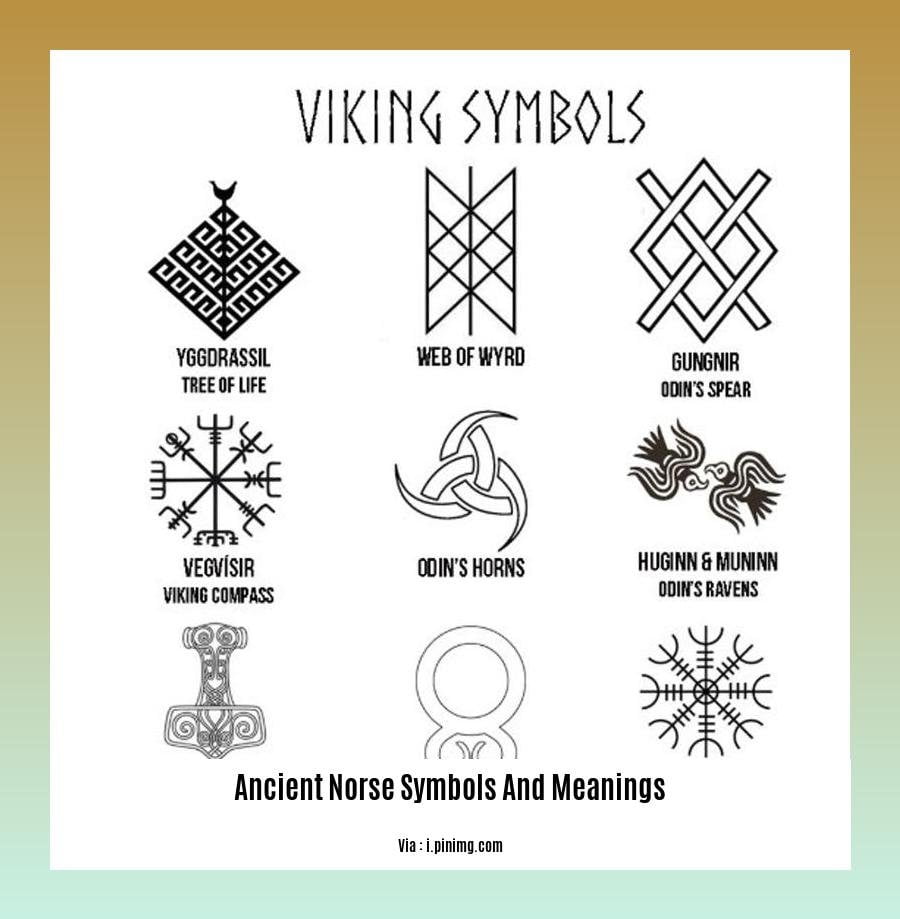
Explore the complex fabric of old Norse symbolism and mythology closely, breaking out the great meanings carved within these mysterious symbols and emblems. From the complex web of Wyrd to the breathtaking Yggdrasil, every emblem whispers a great story of gods, goddesses, and the connectivity of all things.
Travel Through the Norse Cosmos: As the Norns, the Shapers of Destiny, thread the complex strands of fate and connectivity, set out your path.
Valknut: Odigo’s Knot of Death and Rebirth Explore the mysterious Valknut, a symbol laden in the secrets of life, death, and the ceaseless circle of existence. Discover its links to Odin, the beloved deity of war and knowledge, and its great portrayal of fortitude and will against hardship.
Yggdrasil: Norse Cosmology’s World Tree Discover the soaring Yggdrasil, the great Tree of Life tying the nine worlds of Norse mythology together. Discover its great symbolism of balance and connectedness, in which the seeds of the future mix with the roots of the present and the branches of the past entwine.
Navigating Through Worlds Both Seen and Unseen: Unravelling the secrets of the Viking Compass or Runic Compass, Vegvisir Guiding ancient mariners across dangerous waters, this protective emblem guaranteed safe passage and defense against becoming lost in the wide and merciless oceans.
Aegishjalmr: the power of protection and the Helm of Awe Discover the Aegishjalmr, a rune stave enchanted with protection that goes under the Helm of Awe or the Helm of Terror. Often worn as a talisman or amulet, this sign terrified and amazed adversaries, therefore protecting both fighters and travellers.
Key Takeaways:
- Norse symbols are steeped in history, mythology, and profound meanings that reflect the beliefs and worldview of the ancient Norse people.
- The Web of Wyrd embodies the interconnectedness of past, present, and future, woven by the Norns, the Shapers of Destiny.
- The Valknut represents the cycle of life, death, and rebirth, associated with Odin, the god of wisdom and war.
- Yggdrasil, the World Tree, symbolizes the balance and interconnectedness between the nine realms of Norse cosmology.
- The Vegvisir, known as the Viking Compass, guides and protects travelers through both physical and spiritual journeys.
- The Aegishjalmr, also known as the Helm of Awe, bestows protection and instills fear and awe in enemies.
Relevant Sources:
- Valknut – Ancient Pages
- Aegishjalmr – Viking Style
Cultural Importance of Norse Symbols
Old Norse symbols are windows into a rich cultural tapestry spun with stories, beliefs, and customs of a people long past, not only beautiful designs. These emblems were potent statements of faith, identity, and cosmic connection, not only ornamentation.
Norsemen lived with symbols all around. They included everything from guns and ships to jewelry and clothes. They were tattooed on skin, fashioned into runestones, and even spun into fabrics. Every emblem had great significance, tying the Norsemen to their gods, their forebears, and the surrounding natural environment.
Key Takeaways:
- Norse symbols were not just designs; they were profound expressions of faith, identity, and connection to the universe.
- Symbols were omnipresent in Norse culture, appearing on everything from jewelry to ships.
- Each symbol carried a deep meaning, connecting the Norse people to their gods, ancestors, and the natural world.
- Norse symbols continue to captivate people today, inspiring art, literature, and even fashion.
Here’s a closer look at common Norse symbols and their cultural significance:
- Mjölnir: Thor’s mighty hammer, representing his power over thunder and lightning.
- Yggdrasil: The World Tree that connects all realms and represents the interconnectedness of life.
- Valknut: Odin’s knot, a symbol of life, death, and rebirth.
- Ægishjálmur: The Helm of Awe, a protective symbol often worn by warriors and travelers.
These are just a few examples of the many Norse symbols that continue to captivate people today, inspiring art, literature, and even fashion. They’re a testament to the rich cultural heritage of the Norse people and a reminder of the power of symbols to connect us to our past and to each other.
Sources:
- Norse Symbols and Their Meanings
- Norse Mythology Symbols and Meanings
Modern-day Relevance and Continued Use of Norse Symbols
Norse symbols have captivated people from ancient times, reflecting their common beliefs, stories, and cultural legacy. For contemporary people drawn to Norse culture, spirituality, and history, their impact goes much beyond the Viking Age.
These symbols have come alive in many different forms, including:
Fashion and Accessories: Norse symbols abound in jewelry, clothes, and accessories, therefore expressing personal identification and cultural respect.
Artists, designers, and craftspeople are inspired to produce original and significant pieces of art by the complex designs and strong images of Norse symbols.
Media & Entertainment: Norse symbols abound in movies, TV shows, video games, and other popular culture, introducing to next generations their intriguing stories and symbolism.
Many people express their spiritual views or connect with their background by including Norse symbols into their own style, including tattoos.
Norse symbols’ ongoing popularity stems from their capacity to inspire wonder, mystery, and a feeling of historical linkage. Inviting us to delve into the depths of our own history and mythology, they reflect the rich cultural legacy and strong spiritual beliefs of the Norse people.
Key Takeaways:
- Norse symbols have transcended time, continuing to hold cultural and spiritual significance for individuals interested in Norse mythology and history.
- These symbols find expression in various forms, including fashion, art, design, entertainment, and personal adornment.
- The enduring appeal of Norse symbols lies in their ability to connect us with the past, evoke a sense of awe and mystery, and explore the depths of our own cultural heritage.
Sources:
- Norse Symbols and Their Meanings: A Guide to the Viking Age
- The Meaning and Symbolism of Norse Symbols
FAQ
Which Norse symbols most often show up?
Deeply important in Norse mythology and society, some of the most prominent Norse symbols include Valknut, Yggdrasil, Aegishjalmur, Vegvisir, and Mjölnir.
From what does the Valknut emblem stand?
Representing Odin’s authority over these worlds and the path of warriors to Valhalla, the Valknut, sometimes known as Odin’s Knot, marks the change between life and death.
What does the Yggdrasil emblem mean?
The World Tree, Yggdrasil, captures the cyclical character of existence and the interdependence of all things. Its origins link the gods, people, and other entities in Norse mythology across many worlds.
What is the Aegishjalmur symbol for?
A sign of strength and protection, the Aegishjalmur—or Helm of Awe—is Often employed as a talisman or amulet, it was said to fend off evil, boost fighting power, and inspire dread and respect in adversaries.
In what modern context are Norse symbols pertinent?
For many people engaged in Norse mythology, spirituality, and history, Norse symbols remain culturally and spiritually significant. Often used as reminders of old legacy and cultural identity, these symbols are found in contemporary art, jewelry, and home décor objects
q
- Crypto Quotes’ Red Flags: Avoid Costly Mistakes - June 30, 2025
- Unlock Inspirational Crypto Quotes: Future Predictions - June 30, 2025
- Famous Bitcoin Quotes: A Deep Dive into Crypto’s History - June 30, 2025
